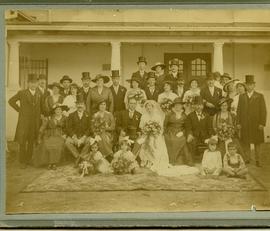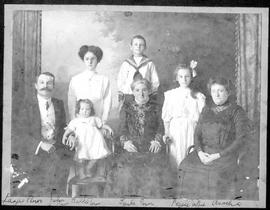Robertson Hebrew Congregation Archive Collection
- Collection
- 2022
The Robertson Hebrew Congregation Archive Collection is shared to sajmarchives by the Kaplan Centre and UCT archival collections. The physical collection is stored in the Kaplan Centre archives under the collection number BC873 and was digitised in 2022 for online display.
Robertson was established in 1853, on the farm Over het Roode Zand, and attained municipal status in 1902. It is named after Dr William Robertson. The town is situated in a fertile valley in an important wine-growing district and is known for its sherry, dessert wines and liqueurs. Other crops include fruit, lucerne, almonds, coriander, and vegetables, as well as wool. Robertson was a thriving centre of ostrich farms from the late 1880s until c1916.
Some of the first Jews who lived in Robertson from 1857 onwards were Levi Witsteyn, a converted school teacher, Abraham Rosenthal, a Russian trader and farmer, Joseph Gluckman, a Russian wagon maker and farmer, and Harry Abraham Millin, a Lithuanian.
Other settlers in the 1890s were marks Simenhoff in 1893, Maurice and Ellen Greenwall and Rev Klein in 1985, Willie and Rose Millin, who were married in Robertson in 1896, Joseph Johanberg from Sweden, Isaac Marks and Moses Rom from Zesmer, Russia, and Maurice ‘Max’ Goldstone from England.
Prior to the establishment of a congregation in 1881, Louis Silbert arranged minyanim for the High Holy Day festivals. The Robertson Hebrew Congregation was founded around 1895, with Rev B Klein appointed as the first minister. The first Jewish wedding in Robertson was between Ellen Buirski and Maurice Greenwall, solemnised in 1895 by Rev Rabinowitz, who came from Cape Town to officiate the event. A Talmud Torah operated from that year with 20 scholars. The synagogue was designed by HC Marcus, built by Solomon Zurnamer and consecrated by Rev B Klein. The synagogue was called the Knesset Israel Synagogue and was situated on Adderley Street. On 24 March 1896 Rev Bender solemnised the marriage of Willie and Rose Millin, the first wedding to be held in the Robertson Synagogue.
Rev Bender dedicated a torah to the congregation on 19 August 1896. On 20 August he consecrated a burial ground at the bottom of White Street. Members of local churches attended the ceremony. An infant named David Rosenzweig was the first grave in the cemetery.
In 1897 services for the High Holy Days were conducted in the synagogue by Rev Klein and Isaac Marks. A general meeting to elect a congregation committee was held shortly afterwards.
In 1900 a ladies’ gallery was built as an addition to the synagogue, at a cost of £60.
Reference:
Rehbock, R. & Delvare, I. (eds.). 2007. Jewish Life in the South African Country Communities, Volume III. Johannesburg. The South African Friends of Beth Hatefutsoth.
Researcher: Alex Abrahams










